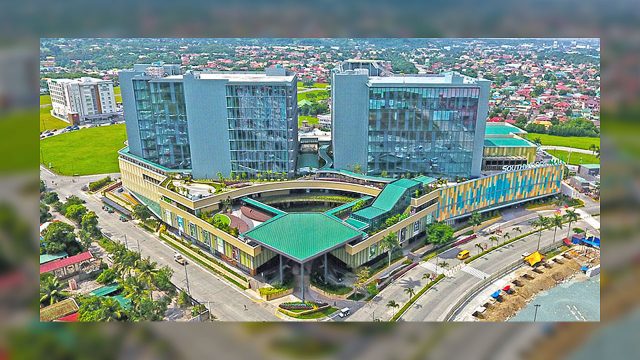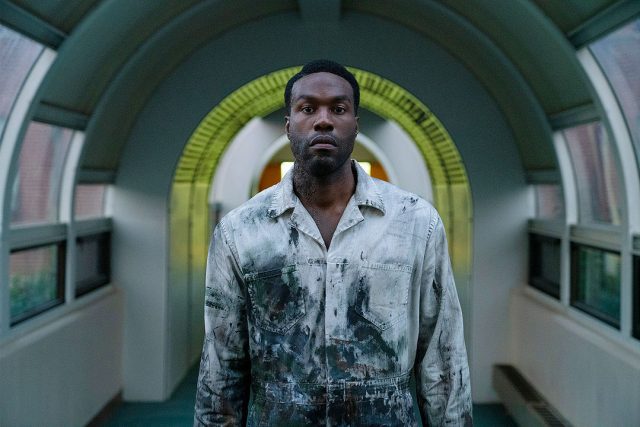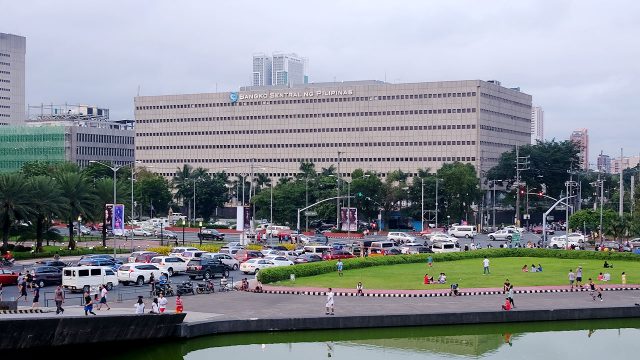Candyman
Directed by Nia DaCosta
The script of Nia DaCosta’s Candyman is problematic, to put it mildly. It seeks to repurpose a dark pop gothic figure to a more politically correct ideology; it seeks to deliver a more positive and hopeful overall message while still administering intense doses of violence and gore, not to mention social satire, to a (presumably) bloodthirsty audience.
Does it succeed? Tell you what I think:
Faulting this sequel of Candyman for trying to rehabilitate a horror flick is silly when you consider that the original production itself was a chimeric creature, an attempt to explore (Cash in on?) current social issues. Writer-director Bernard Rose transposed Clive Barker’s short story about urban poverty from London to Chicago, introducing the issue of race; actor Tony Todd came up with the character’s background, about forbidden love and horrific retribution (his arm is sawed off, his naked body smeared with honey to be stung to death). Powerful story even if it has an arbitrary slapped-together quality, a composite of actual news events (Ruthie Mae McCoy, who died when a burglar climbed through a bathroom medicine cabinet into her apartment) and tales of racist lynchings, and you wonder at the Candyman’s motives — if he’s the victim of racism why prey on white and black folk alike? If he lives on the beliefs of others, how does going back on one’s word help his cause?
And yet the film works, partly because Rose is a tremendous fabulist and partly because Tony Todd as Daniel Robitaille (aka The Candyman) and Virginia Madsen as grad student Helen Lyle researching his legend are compelling together onscreen. If parts of the film feel uncomfortable — if Mr. Todd’s hooked monster raises the specter of racial stereotypes and his scenes with Ms. Madsen have a galvanizing charge — that only adds to the film’s ability to burrow under one’s skin.
You can see the genetic code in the new film — again, the eponymous figure acts out in response to racist injustice, again the mantle is passed on, from recent urban legend to rising star in the contemporary urban art scene (Chicago, which, as implied at one point, is a secondary market compared to New York). This time however Candyman isn’t a single figure but a hive — a collection of melancholy drones young and old, seeking vengeance for the wrong done to them in the past.
Maybe what’s lacking in this sequel-remake (not just an extension of the original but a redefining and broadening in significance) is the whiff of forbidden sexuality implied between Helen the grad student and Candyman, echoed in Helen the virginal plantation owner’s daughter and Robitaille. Producer-writer Jordan Peele (collaborating with Win Rosenfeld and director DaCosta) don’t attempt to establish anything sexual between the new Candyman Sherman Fields (Michael Hargrove) and his new acolyte/victim Anthony McCoy (Yahya Abdul-Mateen ll), though we are offered a happily married gay couple (Nathan Stewart-Jarrett, Kyle Kaminsky) as a presumably more wholesome (and admittedly charming) alternative.
I do miss the sexuality. It’s a constant in Clive Barker’s work (whose Books of Blood short story “The Forbidden” was basis for the 1992 film) and what stitched the somewhat disparate limbs of Bernard Rose’s plot together. Ms. DaCosta’s film does have sexuality — mostly affectionate, between Anthony and his art-gallery director/girlfriend Brianna Cartwright (Teyonah Parris); a touch lurid, as between a couple testing the Candyman legend — but it isn’t a central element in the film’s concept and doesn’t have the same profane feel.
Quick aside in an attempt to explain — Candyman 1992 ostensibly has a potential victim (Helen) being seduced by her victimizer (Candyman/Daniel Robitaille), but the subtext means several things to the audience depending on who you’re talking to: if white, they’re thinking “Ooo, black man, white woman!” If black woman: “there he goes, trying to get above himself.” If black man: “Yes!” Not that this is what they should be thinking — more a shadowy creature lurking in the far corner of their respective minds that they likely refuse to acknowledge, much less consciously act upon.
And behind or beneath all that is Mr. Barker’s inadmissible subtext, mentioned once in the film: “They will say that I have shed innocent blood. What’s blood for, if not for shedding?” It’s Candyman’s rationale for killing black and white folk, innocent and guilty alike, but it’s also very possibly Mr. Barker’s suspicion or even belief about the way the world works — on social media he’s implied he’s been a victim of sexual abuse; he’s dabbled in sadomasochistic sex, and you can tell from reading his works and watching the films based on his works (at one point Candyman suggests to Helen “The pain, I can assure you, will be exquisite”). No, Mr. Barker is not polite company to keep.
Candyman 2021 sidesteps this likely troublesome baggage (I’d love to have seen them go the homoerotic route though) and (as in the original) rides over rough narrative patches through sheer aural and visual style. I remember Mr. Rose’s visuals back in 1992 and looking back recently was surprised at how rough and even primitive some of the effects were — the bees coming out of Tony Todd’s mouth look as if they’re coming out of a mannequin (though, yes, that is Todd’s mouth and, yes, they’re real bees) and the climactic conflagration is clumsily staged — but the imagery still retains power. An early sequence of Helen climbing into the gap left by a medicine cabinet deep inside a neighboring apartment and out a hole in the wall that turns out to be a larger-than-life spraypainted mouth holds the disturbing suggestion of having wandered through the Candyman’s gut to come out the wrong hole. Later Candyman floats above Helen’s leather-strapped body, and Rose pulls off the visual coup of Helen’s prone figure with head pointed to the right wall of the cell when trapped in reality, head pointed to the left wall when under a trance state (later video footage confirms that, yes, her head was pointed to the right wall all the time) — something an understandably stressed first-time viewer might miss.
Todd strides (or glides) through the film with vampiric majesty and Ms. Madsen is unsettlingly luscious as his victim/accomplice. Vanessa Williams is forced to shriek a little once too often, but her early scenes as a mother determined to raise her child properly in the Cabrini-Green housing projects and her later scenes as a figure of moral authority give the film its emotional spine.
Ms. DaCosta turns to Black Lives Matter for her subtext and her film has less of a timeless quality, more of a from-the-headlines urgency; her camera glides with considerably more confidence than Rose, and I believe she matches Mr. Rose in terms of visual inventiveness — where Mr. Rose opens his film with the camera gliding high above the city of Chicago, Ms. DaCosta has her camera gliding far below, looking up at a vertiginous angle at mist-shrouded towers like so many surrounding gravestones. Folks gaze into a mirror to say his name five times — Ms. DaCosta plays into that trope by at one point having Anthony walk into an elevator that’s all mirrors, front, right, left, and ceiling; you feel claustrophobic and agoraphobic at the same time, not knowing if the threat will appear from far off or at your side. Later, Anthony faces Candyman and in a nightmare parody of the Marx Brothers, mirrors the gestures of his hook with a bee-stung bandaged hand. If you miss Todd’s seductive, satanic presence, you have by way of alternative Ms. DaCosta’s sliding, gliding, seductive camera wandering through the shadows and darkly colored sets — though at one point, Ms. DaCosta pauses the camera long enough to take in the haunted image of Brianna’s father Gil (Cedric Mays) sitting sadly at a windowsill before her life changes forever. Robert Aiki Aubrey Lowe takes off from Philip Glass’ hypnotic incantatory score and gives it ambient sounds used as instruments, actor’s recited dialogue, and his own voice recorded in layers, with sometimes just the hint of insect buzz.
Does Ms. DaCosta’s film work? It’s opportunistic, and I can’t blame it for being so; it presents a more gentrified vision of black America, with most of the characters either upper middle class or (in the case of Vanessa Williams’ Anne-Marie) comfortably well off, as if in compensation for all the ghetto porn dramas made through the years about African-Americans — though, to be fair, Ms. DaCosta and Mr. Peele do suggest a darker side of this gentrification, the sense that these prosperous young folk are being exploited by the white society that allows them to exist, and that Anthony is alienated from his lower-class roots to his imminent peril. Yes, there are Candymen but they are posed more like victims than victimizers and if anything, it’s Ms. DaCosta’s camera that floats about and around them, cherishing them, sadomasochistically drinking in their endless, exquisite suffering.











